
museums near Luna Rossa

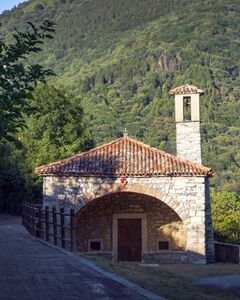
Originally a medieval church (XI century) but many additions and changes have taken place over the centuries. For several years it served as the parish church of Sormano, Caglio and Rezzago. The building, located at a higher level than the street,...

First mentioned the thirteenth century, but excavations, have unearthed remains of a chapel built in eleventh and the twelfth century and rebuilt in the fifteenth century. The bell tower has been dated to the second half of the eleventh century. A...

Built towards the end of 1300 to replace an existing chapel. The church, a single nave, built of local stone and brick, houses the remains of votive frescoes of the fifteenth and sixteenth centuries. It underwent two periods of restoration: one in...
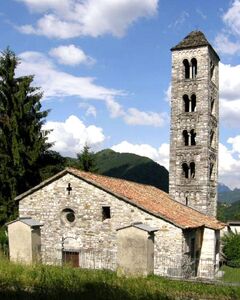
Romanesque in origin, but built on the foundations of a medieval church as demonstrated by archaeological excavations. Another testimony to its antiquity is the dedication to Saints Cosmas and Damian, doctors who were martyred in the fourth century...

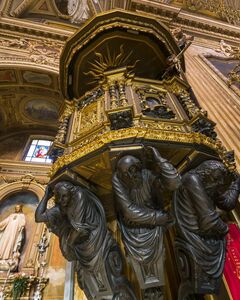
The village contains this interesting church that dates back to the 14th century. It has a fine Romanesque bell tower and a decorated Renaissance portal. An ancient chest behind the altar preserves a precious reliquary, a nail of the Holy Cross....

Built in the space of ten years from 1766-1776. Characterized by a bright interior with elegant harmonious architecture. The walls are like arabesque allegories and symbols of the Passion (spears, lanterns, nails ...). The four corners of the dome,...
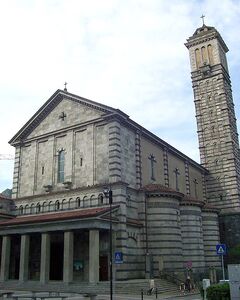
Located in the center of Lecco, this church was built in memory of the fallen of World War I. Constructed in the Romanesque Revival-style, it has horizontal stripes of alternating white stone and granite from the Chiavenna valley. The bell tower is...

Outside of Lasnigo is the Romanesque church of Sant’Alessandro which lies on a slope boulevard flanked by an eighteenth-century chapels of the Cross. In ancient times the original church was built on a lower plateau. Then the bell tower was moved to...

The Sanctuary and the Convent of Santa Maria del Lavello finds origins from an old story. In 1480 water sprang suddenly from beneath an ancient burial place and soon got the reputation of being miraculous, therefore becoming a pilgrimage site. In...
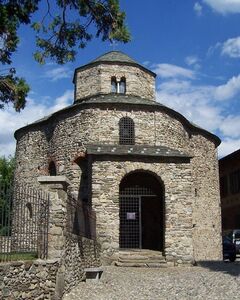
Includes the Basilica of St. Vincent and the Baptistery of St. John the Baptist and is one of the most famous monuments of Lombardian Romanesque architecture. The building, dated 1007, stands as one of the first accounts of the organic form of the...
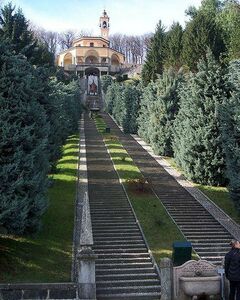
The shrine of Madonna del Bosco is one of the most famous sanctuaries devoted to Mary in all Lombardy, due to its link to Pope John XXIII. The shrine is a great example of Lombardy Baroque and it is placed in the river Adda’s valley on a hill...
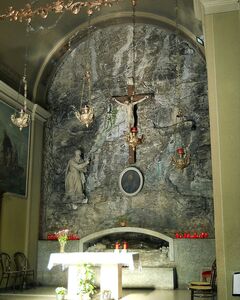
Somasca in the upper part of Vercurago and the starting point for a religious itinerary tracing St. Gerolamo Emiliani’s, who shared his life with the poor and orphans. The path concludes at on a hilltop at the “Castle of the Unnamed" offering...

Nestled in the woods of the Natural Reserve of Valle Bova, the hermitage is available to accommodate individuals, couples, priests, lay people, religious, who want to enjoy moments of silence and prayer....

The Romanesque church of St. Euphemia of Incino d'Erba is one of the oldest churches in the Larian Triangle, the province of Como and the Archdiocese of Milan. The church is located on the ancient road network that connected Aquileia Brescia,...

Also known as St. Anthony, as there is a preserved relic of the saint that is exposed to the congregation of the faithful every 17 January. The church was an integral part of the Franciscan convent of Santa Maria degli Angeli, founded in Crevenna at...
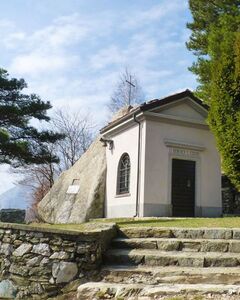
The Stone of Preguda, a rock composed of granite ghiandone, is incorporated in the Church of Sant’ Isidoro. The Stone of Preguda, on the slopes of Moregallo, is a rock composed of granite ghiandone, from the Val Masino and is the most famous...
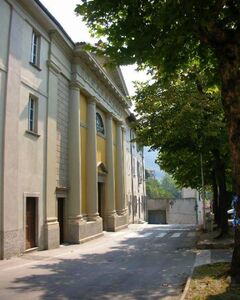
This parish church can be reached through an uphill street passing by the Baroque chapel of the Crocetta. The 19th century front is very elegant and shows a typical Greek design by the architect Bovara. Inside it hosts an altar dating back to the...
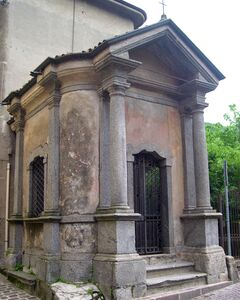
The Chapel of the dead to Crocetta is the oldest and most impressive votive chapel in Malgrate. With baroque architecture, it dates back to the sixteenth century and houses bones, probably of the dead from the plague. Not documented, the chapel is...

These are considered as one of the greatest Romanesque architectural monuments in Europe and are part of a single Benedictine settlement. Important note: the Church can be reached only on foot walking for about 1 hour through a mountain path (300 m...
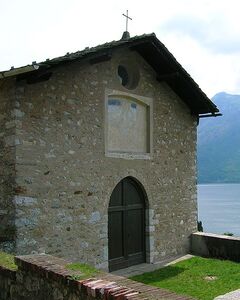
According to tradition, the church was built in the thirteenth century, at the behest of a crusader returning from the Holy Land. According to another legend, the church was built on a refuge belonging to the order of the Templars. Positioned on a...

Built in 1576 by St Charles Borromeo as a temple for the nearby convent of Capuchin Friars. It contains one of the most collections of art in Lecco: nine glass houses containing compositions of polychrome wax that represent the seven scenes from the...

The construction of the church began in 1791 and ended in 1823 requiring the works of several architects: Clemente Isacchi, Giuseppe Pollack, Giuseppe Bovara and Simone Cantoni. The church hosts a crucifixion of 1879 by Mosè Bianchi and a painting...
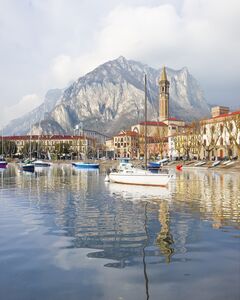
Main church in Lecco dedicated to the saint patorn of sailors. Its structure is in Neoclassical style thanks to the architect Giuseppe Bovara who worked on its enlargement and contains 17th century furniture, a baptismal font of 1596, Romanesque...
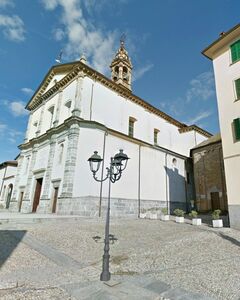
Considered one of the most important Lombard Romanesque monument of its kind. Inside it holds frescoes of the 15th and 16th centuries. The building has an octagonal plan and a semicircular apse dating back to the 11th century, although some elements...
A guided tour that tells the story of the radio that will provide insight and memories from the olden days before flat screen TVs and the Internet....
A small museum housing artifacts, images and posters describing the history of granite processing in Novate Mezzola. Sanfedelino. For nearly two centuries, extracting granite from the Sanfedelino quarry, so called to recognize the martyr Fedele...
Ancient and modern printing, from mobile characters to computers is the theme of this museum. Here one can see antique-type lithographic presses, machines for the casting of the lead characters, the first cameras dating back from the end of...
Visit a century old mine and see the techniques employed to extract barite an important mineral used to refine sugar, in rubber, coated papers, pigments, glues, plastics and in protective materials against radiation. The material comes out the...
The baths date from the first century A.D. to the present day. Since the second half of the first century AD, the remains of Roman baths were spread over an area of about 1500 square meters. Thanks to recovery work in recent years, the baths are now...
Educational science museum that was inaugurated in 1917 aiming at providing educational tools for teaching science in school. The room that hosts the museum is painted with frescos inspired by nature and displays images of all Nobel Laureates who...
A museum that aims to preserve and offer an account of country life in the late nineteenth and early twentieth century, documented by artifacts and various objects. The museum is located on two floors: the first one is set up as a home environment...
The House Museum of Moggio was commissioned in 1991 by Maria Goretti who, donated the property to the parish with the stipulation that it be used to benefit the community. The Museum includes historical objects, old photographs, fossils and minerals...
Contains a collection of natural history (fossils, minerals, dioramas of animals and a butterfly collection), archaeological and ethno-anthropological material with a reconstruction of a "Casel ", the typical hut of Maggengo. It is the first local...
Gallery space that promotes various forms of art to ordinary people, trying to combine accessibility and quality, local and universal dimension, past and present. If we want people to love culture we have to give them a reason to love it. During the...
In addition to its lavish gardens and picturesque position on the lake, Villa Monastero is also a house museum where a vast number of objects belonging to its several owners are displayed....
Thanks to Giambattista Sommariva the villa reached its greatest glory in the 18th century, being enriched by art masterpieces and becoming a museum. Sommariva was an art collector and bought the estate at the beginning of the century; he enhanced...
The Museum holds records of the local history, traditions and customs. Several natural environments are recreated complete with plants, animals, mushrooms fossils and dioramas relating to the local fauna. The museum also has documents about the...
In 1978 a group of friends of the Lake of Como founded an association called "The Collection of Boats of Lake Como" with the aim of saving the age-old and noble nautical traditions of their lake. The museum was opened in 1982 and it is fitted out in...
The Palace was then the scene of memorable historical facts and today becomes the perfect setting for their commemoration museum. Thus it was born in Dongo the innovative Museum of the End of the War: a virtual tour and interactive in the depths of...
The Toy Horse Museum is the first and to date only museum in the world dedicated to the horse toy. The Museum is located in what was once the stables of the famous trotter Tornese that in the fifties was more times world champion. In 1969, the...
Exhibition space for cultural events as contemporary art exhibitions, conferences, concerts and living-performances. One of the better known examples is MiniArtTextil—an annual international exhibition of contemporary art showing the best in Textile...
Our Museum: a voice which recounts to the future generations the importance of the events that took place in Dongo in April 1945. The last page of the WWII’s history was written here: the tragic tale of a war and a dictatorship which was responsible...
The Museum extends over a surface of 1000 square metres and its exhibits reconstruct the silk manufacturing process with an historical and educational approach. The visitor is given the opportunity to learn more about both the whole process and the...
The Moto Guzzi Museum is located in Mandello del lario, Lake Como, the original birth place of the Moto Guzzi Eagle motorcycle established in 1921. See many other models representing milestones in the history of Italian motorcycling. Complete the...
Como’s Archaeological Museum Paolo Giovio is housed in the Palazzo Giovio, and features collections from prehistoric and antiquity eras. The building, dating back to the late Middle Ages, underwent some changes in the sixteenth century by Benedetto...
This gem of a museum sits in a spectacular spot, adjacent to the chapel of the La Madonna del Ghisallo – patron saint of cycling – and 600 metres above Bellagio, offering spectacular views of Lake Como to the North and East. Together with the chapel...
What is today the Giuseppe Garibaldi Museum was once a residential building, which hosted Garibaldi during his campaigns for independence. Within its walls, is an impressive collection of dresses, weapons, documents and furniture of the...
More than two hundred navigational instruments are on display in this antique tower-shaped hous. Among the most interesting instruments in this private collection are a XVIII century telescope made in Venice, compasses and solar clocks of various...
The “Luigi Scanagatta" museum is of cultural and historical importance because of the number of birds specimens that was gathered throughout the years and its history. It was established in 1962 by professor Luigi Scanagatta, a well known...
Civic museum and gallery with artifacts and paintings from the Middle Ages, Renaissance and contemporary works....
The Volta Temple is a museum dedicated to Alessandro Volta, a prolific scientist and the inventor of the electrical battery. Volta was born in Como in 1745, held his first professorship there until 1779, and retired to Como in 1819. It is one of the...